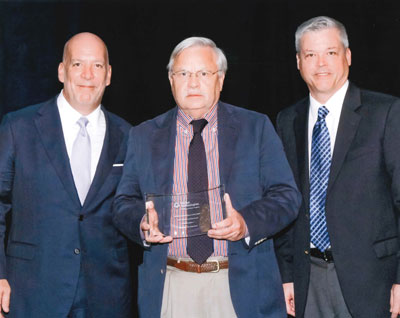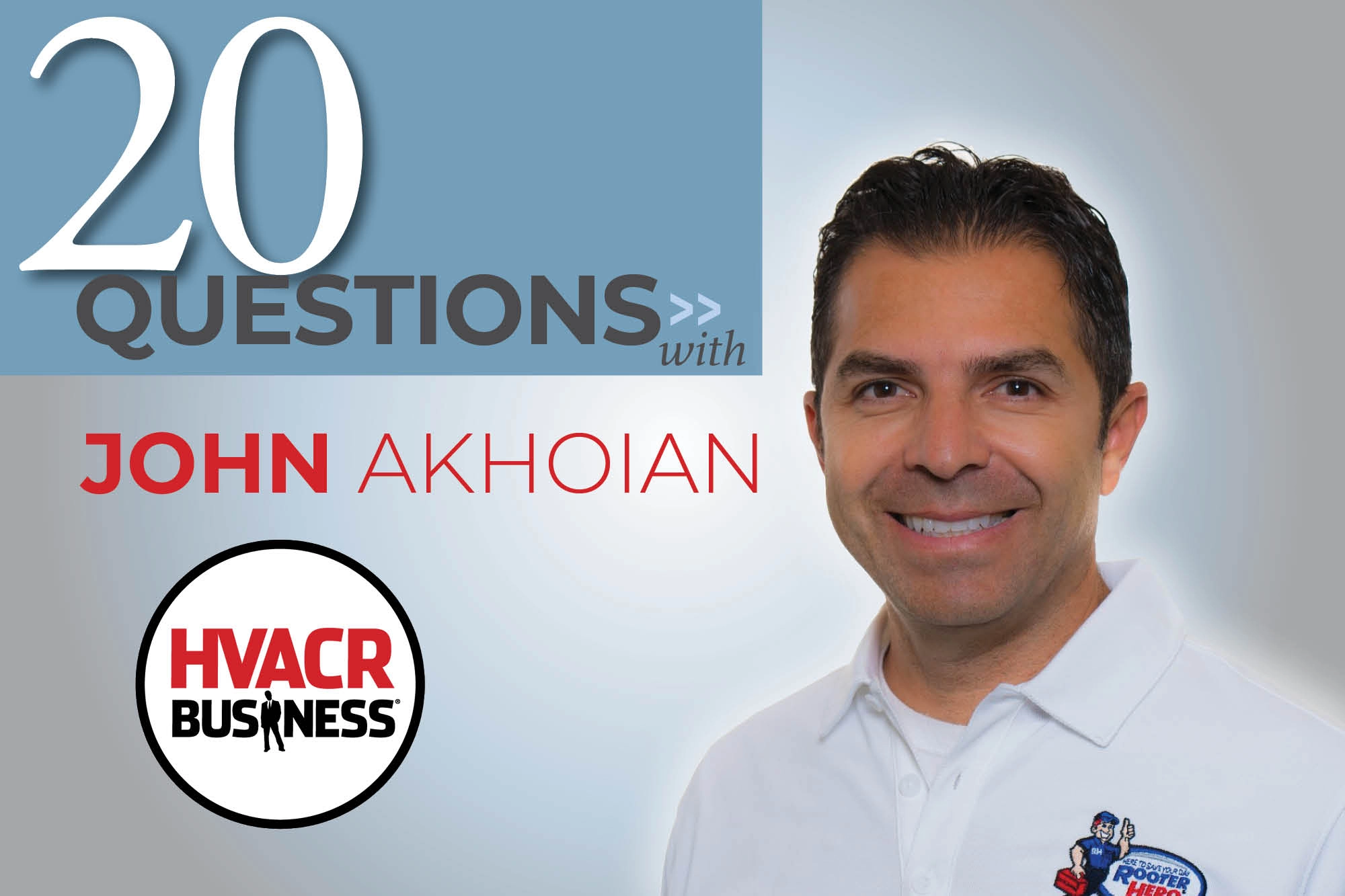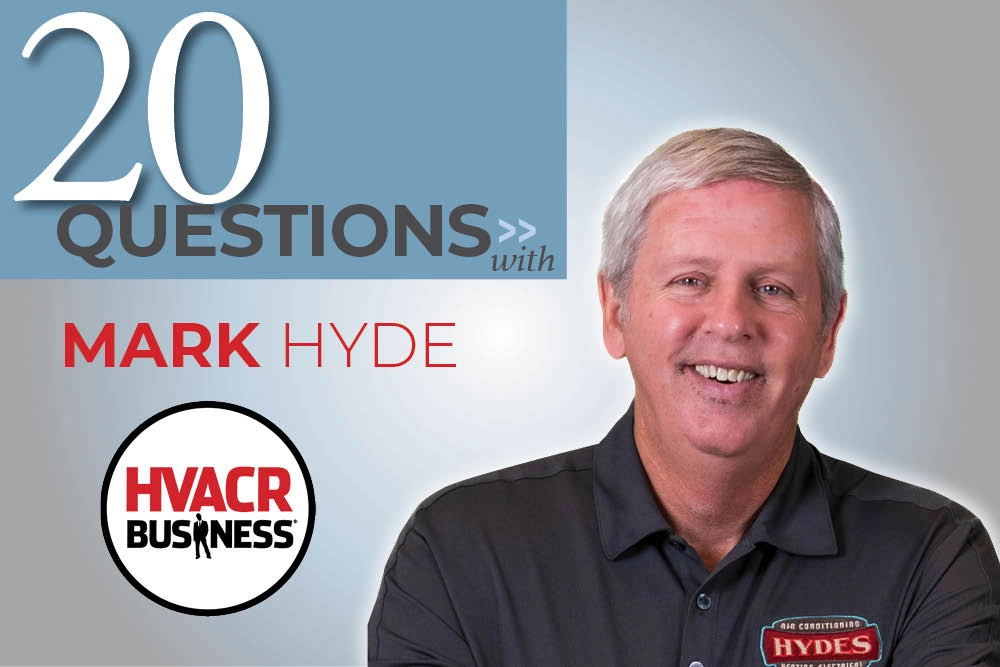Publisher Terry Tanker sat down with Ken Swanson and (the late) Garth Tagge, two entrepreneurs who started an industry by laying the foundation for spot cooling. This is Part Two of their story.
In part one of our story, Ken Swanson and Garth Tagge spoke about the spot cooling industry’s origins and how they began to create demand for this technology by putting units on the sidelines of NFL football games. But they were just getting started.
Fun Hobby To Big Business
Tagge: Right after the Super Bowl, I left Nippondenso to work full time on Spot Coolers and I moved from California to Georgia. I called Ken and asked if we could meet in Florida to make sales calls. Ken was splitting time because he was still running the supply house in Illinois. We met for beers and brainstormed about what the next “big thing” was going to be.
The TV show Miami Vice was the biggest thing on TV then … it was huge. That night we decided to find out where they were filming. We went to the warehouse to pick up a van with a unit in the back. After stopping at a phone booth and making a bunch of calls, we find out they’re at the Alexander Hotel in Miami Beach.
We pull in and told the security guard we have a delivery for Miami Vice. We show him some papers and say, “Here’s the bill of lading.” He asks if we know where we’re going. We say yes we’ve been here before, and then the gates open up.
Now we’re in this compound and a second security guard comes up and asks us what we’re doing. After telling him we have a delivery for Vice, he simply points to a building. We pull over and unload the unit and go in the side entrance. The unit takes three to four minutes to cool down, so we find an outlet and plug it in. Then, we walk down the hallway and find an open door … it’s the wardrobe room.
We find two guys behind a desk and tell them we have a delivery … a portable air conditioner. They look confused. We tell them it’s set up down the hall and take them over and show it to them. It’s blowing really cold air by now.
One guy says, they’re filming the greyhounds tonight and this might really work to keep the dogs cool. We leave the unit. A month later, we called to get the unit back.
They tell us, “No way. Don Johnson uses that when he sits in his sports car and he’s never giving it up.” We never saw it again.
Swanson: In the late 1980s, we started advertising in the Thomas Register remember those things? They were like encyclopedias on steroids! We were still trying to sell into different markets. Manufacturing production lines were a target because that’s what the product was first developed for and, every once in a while, we’d get the big hit where a manufacturer would buy 25 or 30 units. In the mid to late 80’s things started to change. One day an AT&T sales rep came into the wholesale business and sits across from me and says, “There’s this thing called the Internet, and you should get a domain name.” I looked at her and said, “What are you talking about?”
Needless to say we listened to her. We explained what we were doing and at some point during that conversation we said we wanted the name spotcooler.com. Soon after she called back and said that name is taken but you can have spot-coolers.com, so we took that.
That was an interesting lesson. Ever since, I’ve wondered why I never bought the domain for my distribution business then – it was Chase Distribution. Can you imagine if I would have bought chase.com?
Marketing Creates Demand
Swanson: One Friday afternoon in Chicago, Zenith called and asked us for 25 of the one ton units, but they needed them by 8 p.m. that night. It turns out, Saturday morning they were having a vote to go union or stay non-union. Management wanted to show the employees they were giving them AC for their stations. The key for us was being able to deliver with tight time constraints. That reinforced our thinking that our product was ideally suited to address emergency demand 24/7 and we had to be able to deliver.
In the beginning, it was free product demonstrations. We were simply trying to determine if there was a market. The things we did with the NFL and Hollywood proved there was. Then, over time we needed to create larger demand within specific markets, dominate those markets, compete to be the leader and make money.
When you are in the rental business, you are 24/7. You’re promoting the fact that when something fails, you’re there. This means you have to have the product and the ability to get it delivered to the customer.
As we started to grow I don’t think we realized how important it was to have a great banker and insurance broker behind us, and we had both. We needed financing for all of those units and they needed to be insured. We worked with a couple of great guys who got us financed and insured.
Logistically, the largest challenge was setting up a branch in Chicago and knowing it had to service the entire state of Illinois. The same with our office in Atlanta and Florida — you serviced the whole state from one location. When you promote 24/7, after-hours services, you have to deliver no matter where the call comes in from. Back then, we only had one employee per location.
Tagge: Everyone who comes to work for us understands what kind of business we’re in … and we pay well. We understand it can be a tough job. But, you can also earn a great living.
Swanson: Communication was also a challenge. Remember, cell phones weren’t on everyone’s hip like they are today. Our employees always had a roll of quarters with them. Eventually we got everyone pagers.
I’ll never forget this one instance. I’m with Arden our guy in Florida. He was one of those guys with the rolled up Lucky Strikes in his t-shirt and would just work his ass off. He’d get in the van and just drive all day.
I remember saying, “Arde, the units in Jacksonville are ready to be picked up and we have to deliver a unit over in Tampa and Disney needs a unit in Orlando too … so can we do that?”
He says of course, he’s got those Lucky Strikes, a big cup of coffee and off he goes! Seven or 8 p.m. he calls, and says, “Okay, boss, all done.” At the time, I had no idea how big Florida was — he would leave from Boca make all those stops and he would be home that evening!
 Customers Spur Growth
Customers Spur Growth
Tagge: We did anything and everything to make the customer happy — and we still do. We had grown significantly each year and we’d have strategic meetings and discuss our future.
One of the agenda items was outlining a plan to eventually sell the company. We thought it might take us years, not only to plan but also to implement. We began to routinely talk with accountants, financial planners and attorneys. We learned an enormous amount in the process because we met with several different types of groups that wanted to buy us. Private equity firms, large manufacturers and small companies looking to grow their portfolio.
The equity groups were fascinating to listen to and they had complex purchasing models, but we listened and learned.
Swanson: Contrary to what some may believe, we didn’t sell the business “for the money.” We were making plenty of money and growing 15 to 18 percent every year. We sold the business to offload the compliance issues from HR, OSHA, EPA, accounting, healthcare and more.
Continued growth was the opportunity for the buyer solving compliance issues and back off issues were our drivers on the sale — but only with the right partner.
First and foremost, we wanted a partner that wouldn’t crush the entrepreneurial spirit out of a company such as ours. We wanted a partner that would maintain our vision. If you maintain the ownership in place and share their vision and remove the obstacles and things holding them back, and let them spend their time realizing the vision, things work out for everyone.
Tagge: In the end, after we had evaluated many offers we thought the best fit for us was United Technologies and Carrier. We were both in our 50’s and neither one of us wanted to retire. We still had a lot to work for and we knew we could learn a lot from a Fortune 50 company. So, in June of 2006 we sold the business which brought us to the end of that chapter in Spot Coolers history.
Epilogue
 Sadly, in October of 2016 Garth Tagge was killed in a boating accident on the Potomac River along with his driver Jim Melley. They were avid racers who were trying to beat a record they had set in a 36-foot Skater racing boat earlier that month at 194 miles an hour.
Sadly, in October of 2016 Garth Tagge was killed in a boating accident on the Potomac River along with his driver Jim Melley. They were avid racers who were trying to beat a record they had set in a 36-foot Skater racing boat earlier that month at 194 miles an hour.
Swanson: We were best friends, it was devastating to hear the news about the accident. But he absolutely loved racing. I’ve thought about him a lot the last three years, he was a great business partner and friend. Reading this story you can just tell how much fun we had together. In the article we didn’t touch on the fact that Garth was a great salesman.
He was charming, articulate and had a great memory. He could remember things you wouldn’t believe from year’s prior. And, he always took little notes in the Denso journals one of the assistants used to send to us. Names, dates, orders, sketches and he kept all of them. I have them in the office and page through and reminisce about all the fun we had.
Several months ago I had given the final draft of this article to Pete Grasso, our editor, so he could schedule it for production. In mid-May, however, I told Pete I had a different ending to squeeze in before we went to press: Swanson retires.
Thirteen years after selling the business and four years after we sat down for the initial discussion for this article, things have come to a conclusion. Ken decided it was time to retire.
“Garth and I thought we’d stay around five maybe 10 years after selling the business – it’s been 13 for me,” Swanson said. “I’ve had a great run and now it’s time to see what else is waiting for me out there !”


 Customers Spur Growth
Customers Spur Growth Sadly, in October of 2016 Garth Tagge was killed in a boating accident on the Potomac River along with his driver Jim Melley. They were avid racers who were trying to beat a record they had set in a 36-foot Skater racing boat earlier that month at 194 miles an hour.
Sadly, in October of 2016 Garth Tagge was killed in a boating accident on the Potomac River along with his driver Jim Melley. They were avid racers who were trying to beat a record they had set in a 36-foot Skater racing boat earlier that month at 194 miles an hour. 



